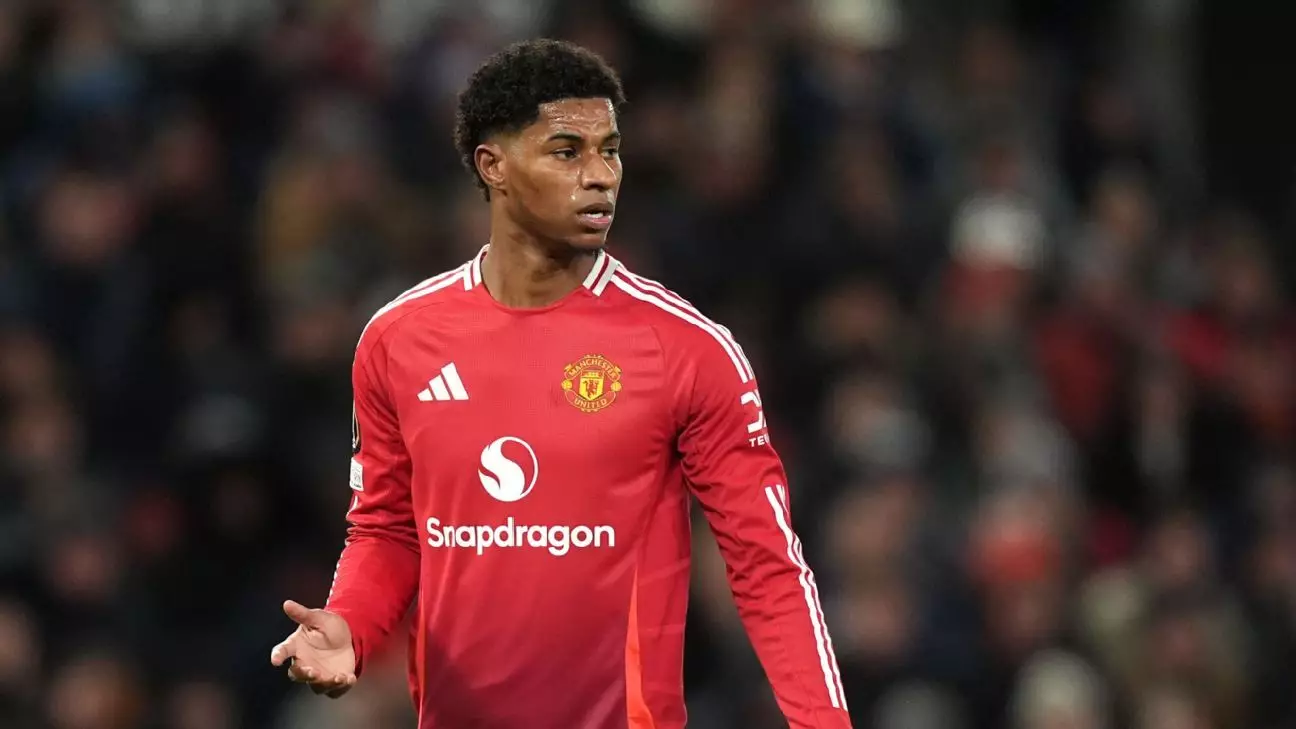In today’s hyper-competitive football environment, transfer strategies have transcended simple player acquisitions. They are meticulously crafted blueprints that shape a club’s future, influence its tactical approach, and impact its global brand. Top clubs such as Barcelona, Liverpool, Manchester United, and others are locked in a high-stakes game of chess, maneuvering for players who can transform their fortunes. A keen observer recognizes that behind every rumored deal lies a complex web of negotiations, financial calculations, and strategic vision. This article critically analyzes the current transfer landscape, emphasizing how shrewd decision-making and innovative thinking will define the next era of football dominance.
The Strategic Value of High-Profile Signings
The recent whispers surrounding Manchester United’s Marcus Rashford exemplify how forward-thinking clubs leverage star signings not just for immediate performance but for long-term branding and competitive leverage. Rashford’s potential move to Barcelona isn’t solely about adding a potent attacking option; it’s also about elevating the Catalan club’s stature within global markets. Barcelona’s interest in a loan deal with an option to buy at a reduced price underscores a pragmatic approach, minimizing financial risk while testing the player’s fit within their tactical system. Conversely, Manchester United’s valuation of €48 million for Rashford indicates their valuation of the player’s current market worth, reflecting an understanding that negotiations are a balancing act between valuation and market realities.
This scenario demonstrates how elite clubs consider both the on-field value and off-field economics, recognizing that signing a marquee player can bolster merchandise sales, sponsorship deals, and international appeal. The strategic patience displayed by Barcelona, opting for a phased approach, exemplifies a nuanced understanding that investment in star talent requires careful timing. Clubs that can adapt their plans according to market conditions while maintaining a clear vision for team evolution often outperform their rivals.
The High Stakes of Defensive Reinforcements
In the realm of defensive signings, Liverpool’s aggressive approach for Marc Guéhi highlights how clubs prioritize stability at the back to underpin their tactical philosophy. The £40 million “take-it-or-leave-it” offer reflects confidence rooted in a deep understanding of Guéhi’s rising value, as well as a calculated bid to outmaneuver rivals such as Arsenal and Chelsea. Liverpool’s firm stance reveals a broader strategic mindset: securing a young, athletic defender now could prevent future vulnerabilities and solidify their title ambitions.
However, the transfer market’s volatility demands more than just snap judgments. The clubs’ willingness to pay a premium for Guéhi underscores how undervaluing defensive stability can have repercussions on overall team performance. Liverpool’s move exemplifies a broader trend: investing heavily in defense to build a resilient squad capable of competing across multiple competitions. This approach signifies strategic foresight, recognizing that overwhelming offensive firepower alone isn’t enough; it must be complemented by a solid defensive foundation.
The Complex Web of Midfield and Forward Market Dynamics
Moving into midfield and attacking options, clubs like Inter Milan, Arsenal, and Manchester United are engaged in a high-stakes tug-of-war for promising talents such as Granit Xhaka and Rodrigo De Paul. The intense competition exposes a broader strategic shift: clubs are increasingly willing to pay significant premiums for players who offer versatility, experience, and tactical adaptability. For instance, Inter’s interest in Xhaka signals the club’s desire for a durable, possession-oriented midfielder capable of orchestrating play and providing leadership.
Meanwhile, rumors of Manchester United’s pursuit of Bryan Mbeumo and Jadon Sancho’s transfer saga illustrate how clubs are meticulously planning their attacking futures. Sancho’s potential move to Juventus—reported to be worth over €5 million per year—signals United’s acknowledgment that player sales can generate funds for further acquisitions, while also recognizing the importance of restructuring attacking options in line with the manager’s tactical vision. These maneuvers reflect strategic agility: clubs are not merely reacting to market trends but actively shaping their squads based on long-term ambitions.
The Unpredictable Nature of Global Transfer Investment
The global transfer market’s dynamism is further exemplified by the interest from clubs outside traditional European hubs, especially in the Middle East and Asia. Al Hilal’s enquiries about Benjamin Sesko and Ollie Watkins underscore how emerging leagues are increasingly investing in young, high-potential talent to boost their competitiveness and global standing. This shift indicates a broader strategic intention: to leverage lucrative financial incentives to attract top young players and disrupt traditional transfer patterns.
However, the international disparity in transfer values, such as Leverkusen’s €90 million demand for Sesko, exposes the financial risks involved. Clubs must exercise strategic rigor, balancing player value with financial sustainability. This global diversification in transfer interest signifies a strategic evolution where clubs seek not just immediate impact but also long-term global branding and revenue growth, positioning themselves as serious contenders on the international stage.
The Future Outlook: Embracing Tactical Innovation and Financial Cunning
Looking forward, the transfer strategies of top clubs suggest an evolving landscape where tactical innovation and financial acumen will be paramount. The ability to identify undervalued talents, negotiate favorable loan deals, and make bold, calculated investments will define those who emerge as football powerhouses. Clubs that harness data analytics, embrace modern negotiation tactics, and maintain flexible yet ambitious visions will turn transfer windows into their strategic playgrounds.
Ultimately, success in future transfer markets will depend on a club’s capacity to blend financial discipline with inventive tactical planning—transforming player movements from mere transactions into catalysts for sustained excellence. The game is shifting from reactive signings to proactive, strategic asset management, heralding a new era where vision and cunning are the sharpest weapons in the relentless pursuit of football greatness.

